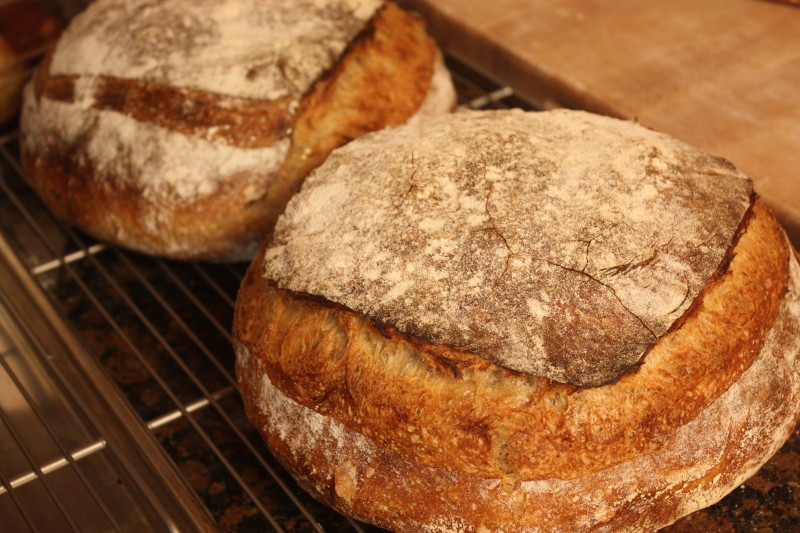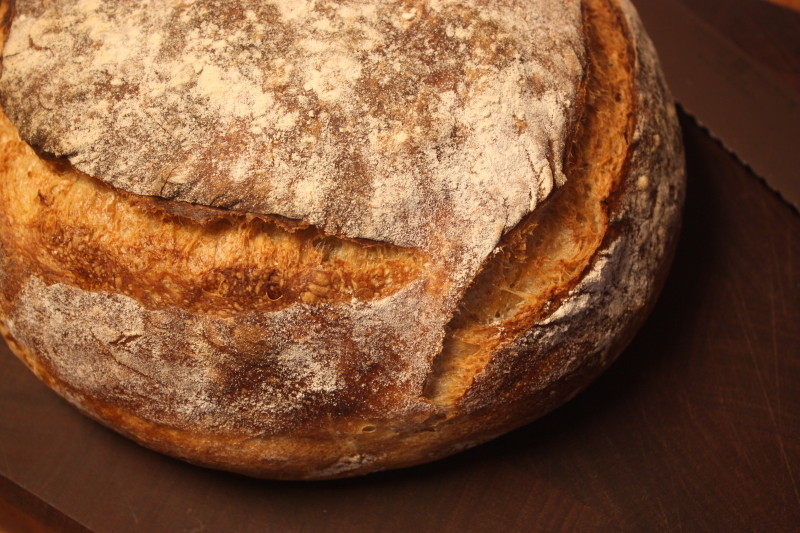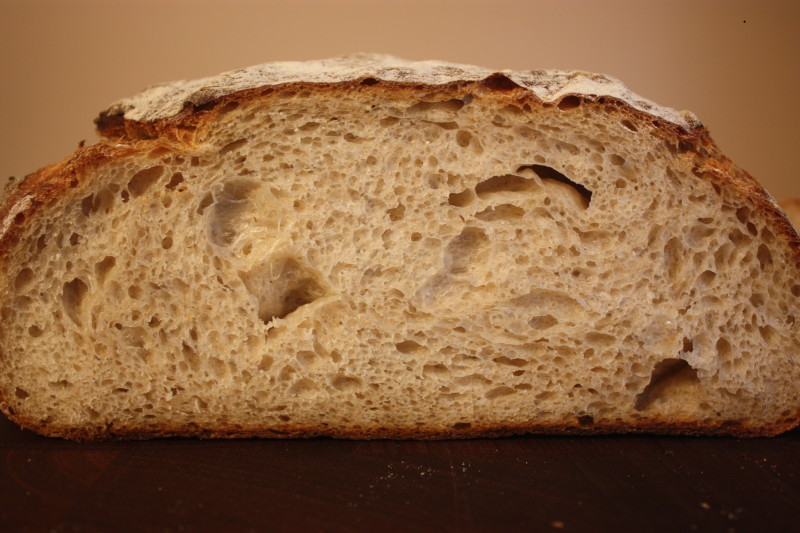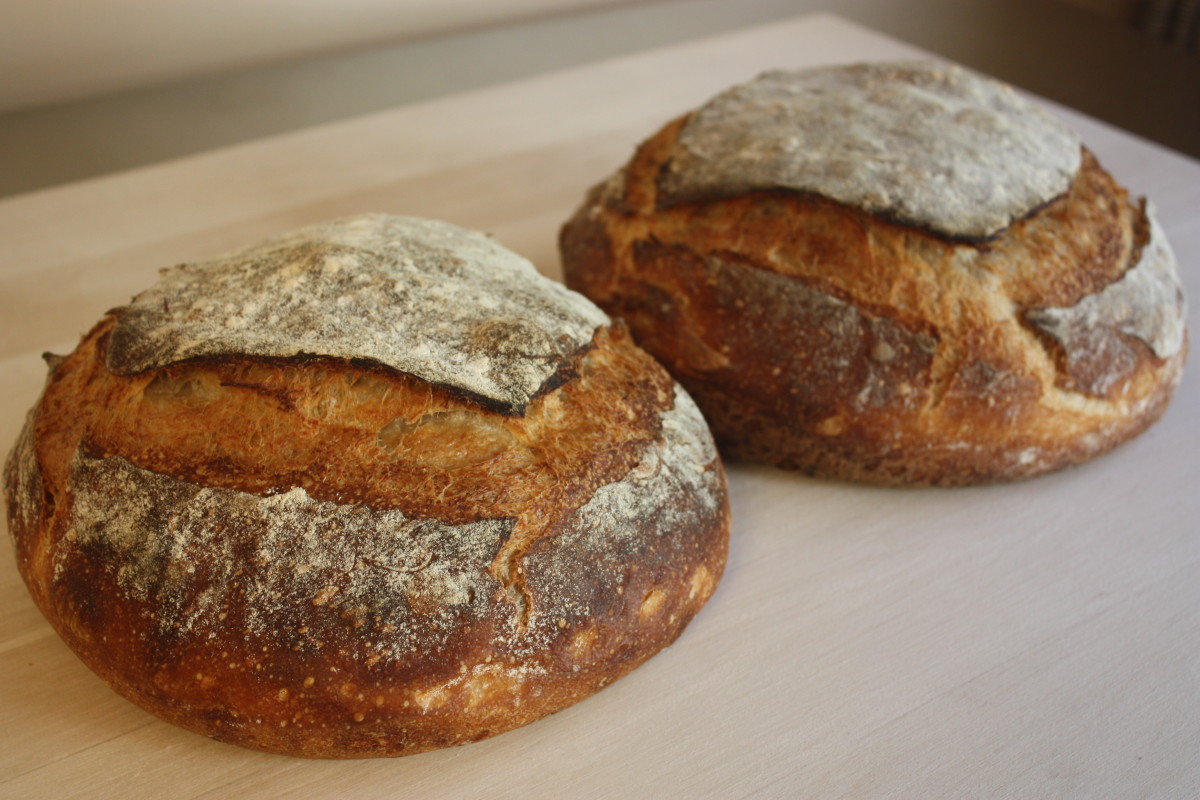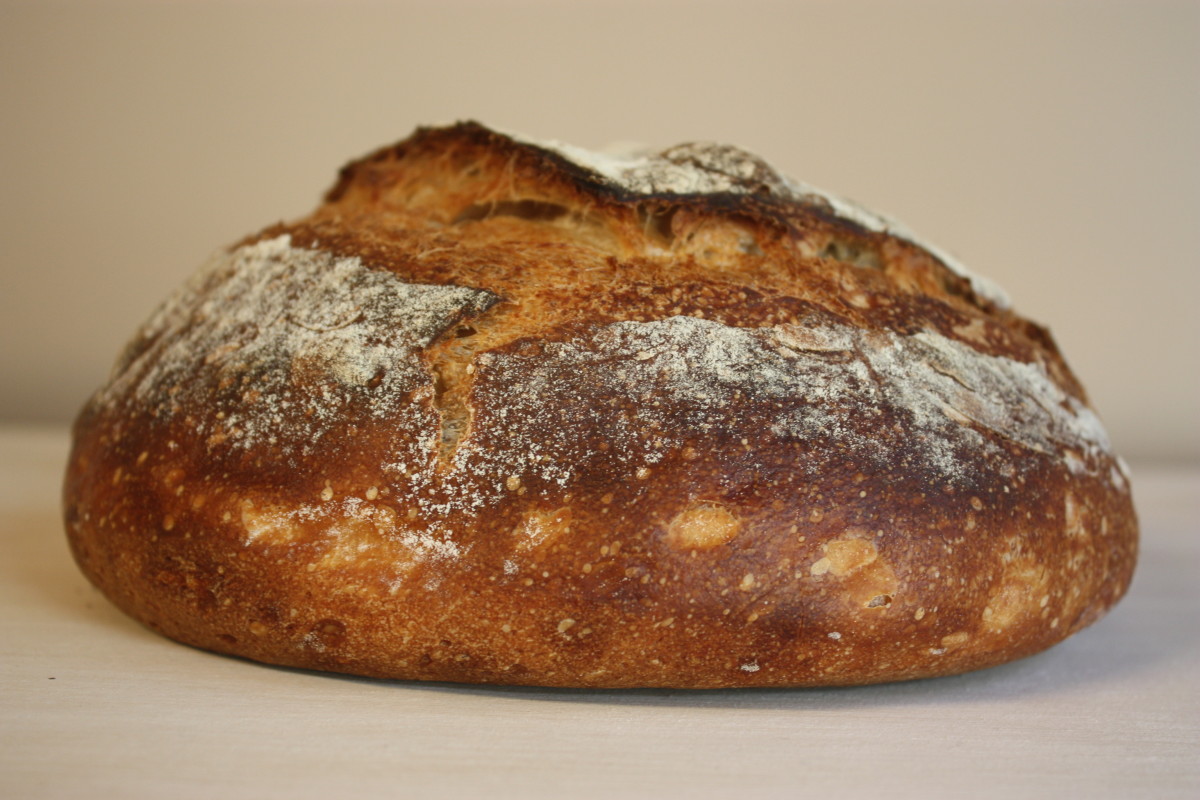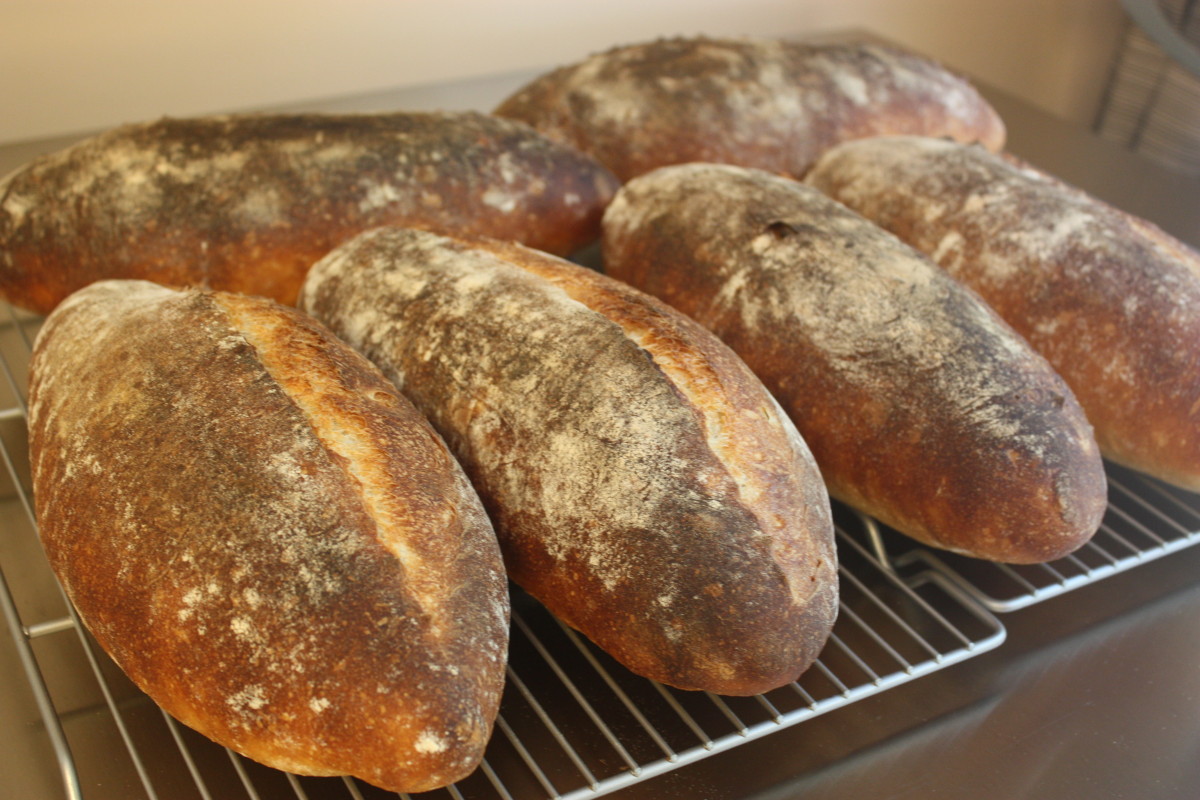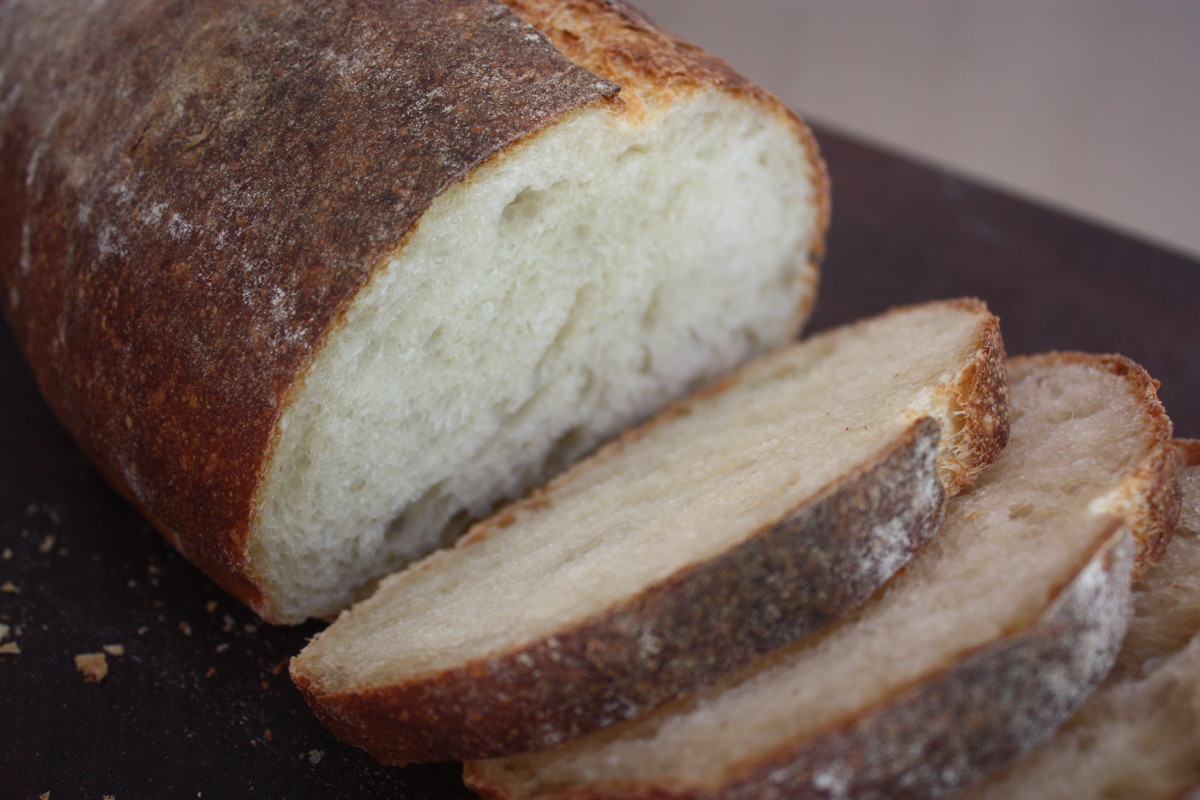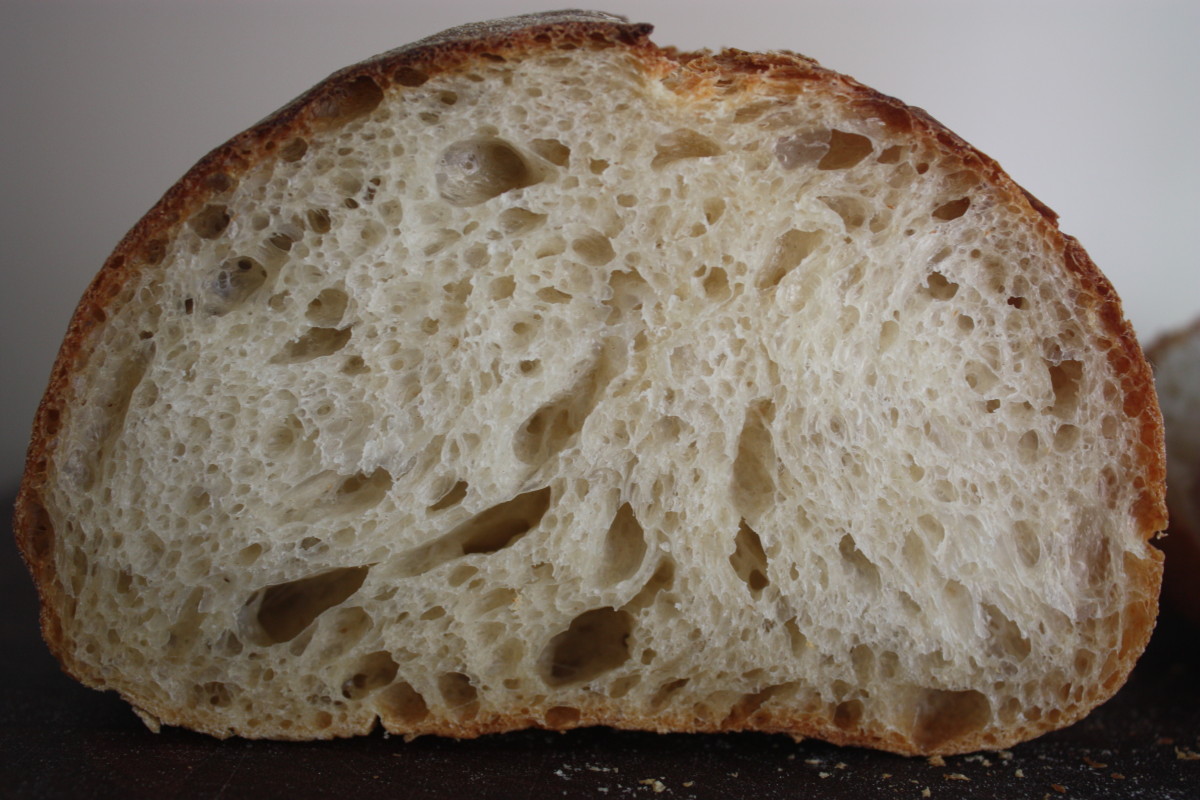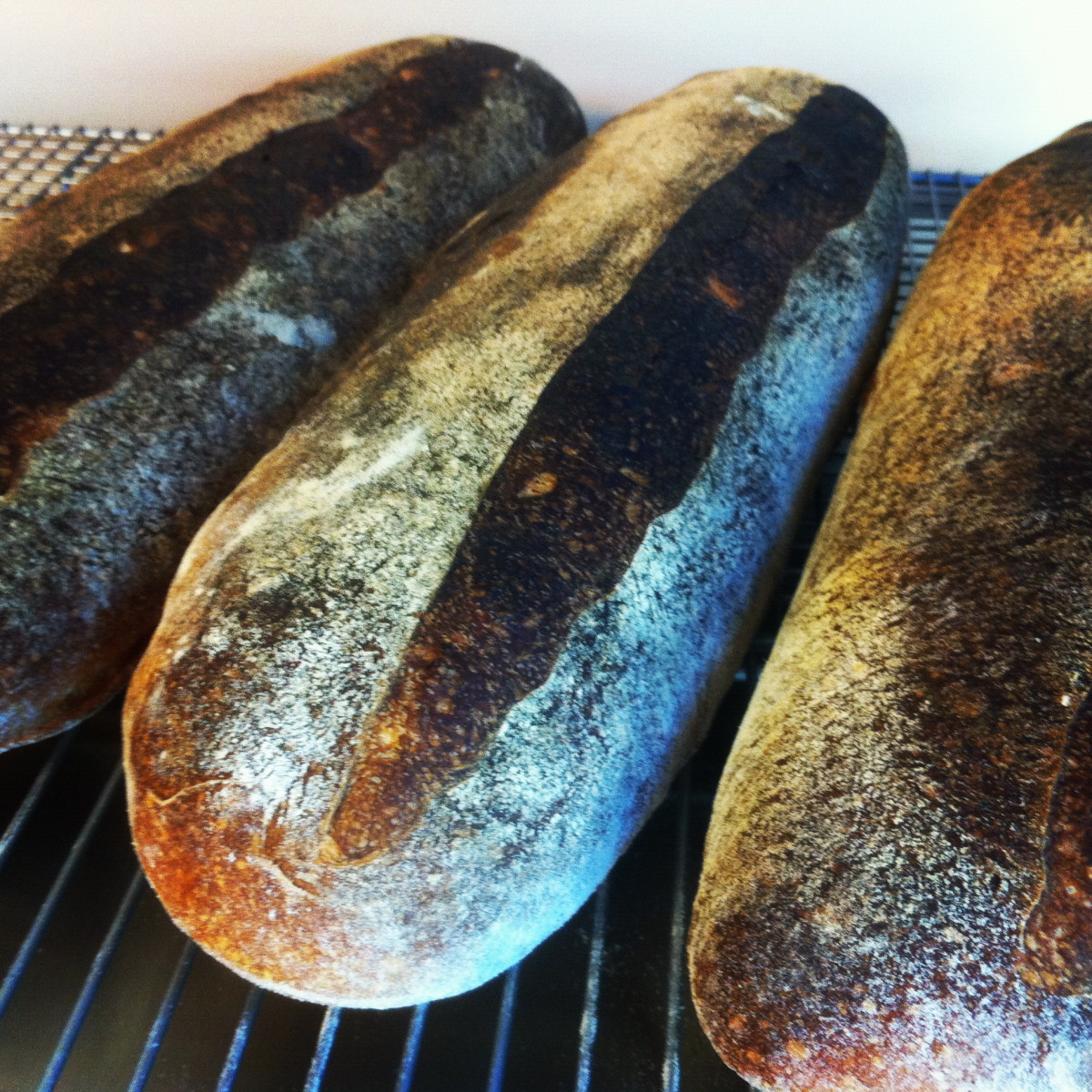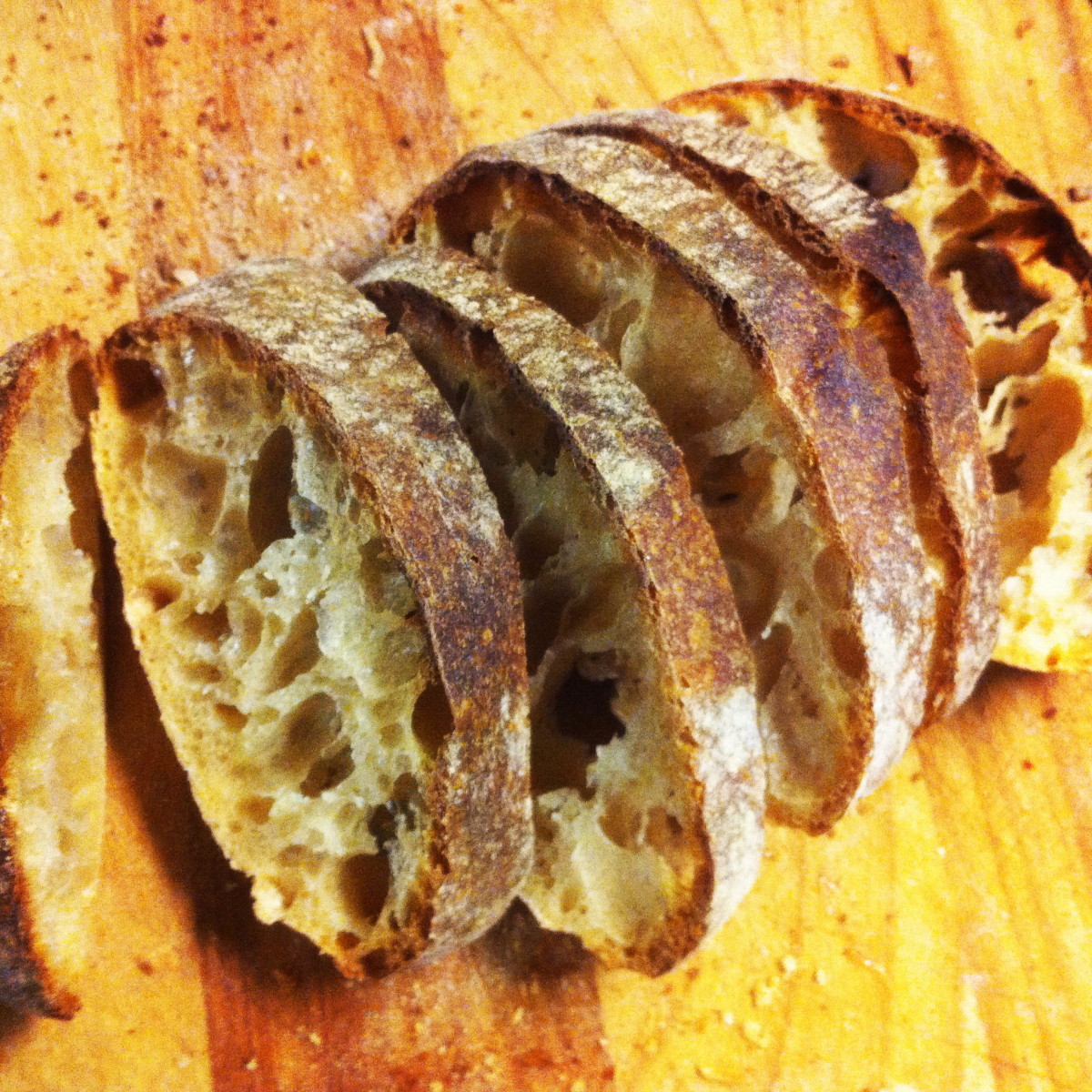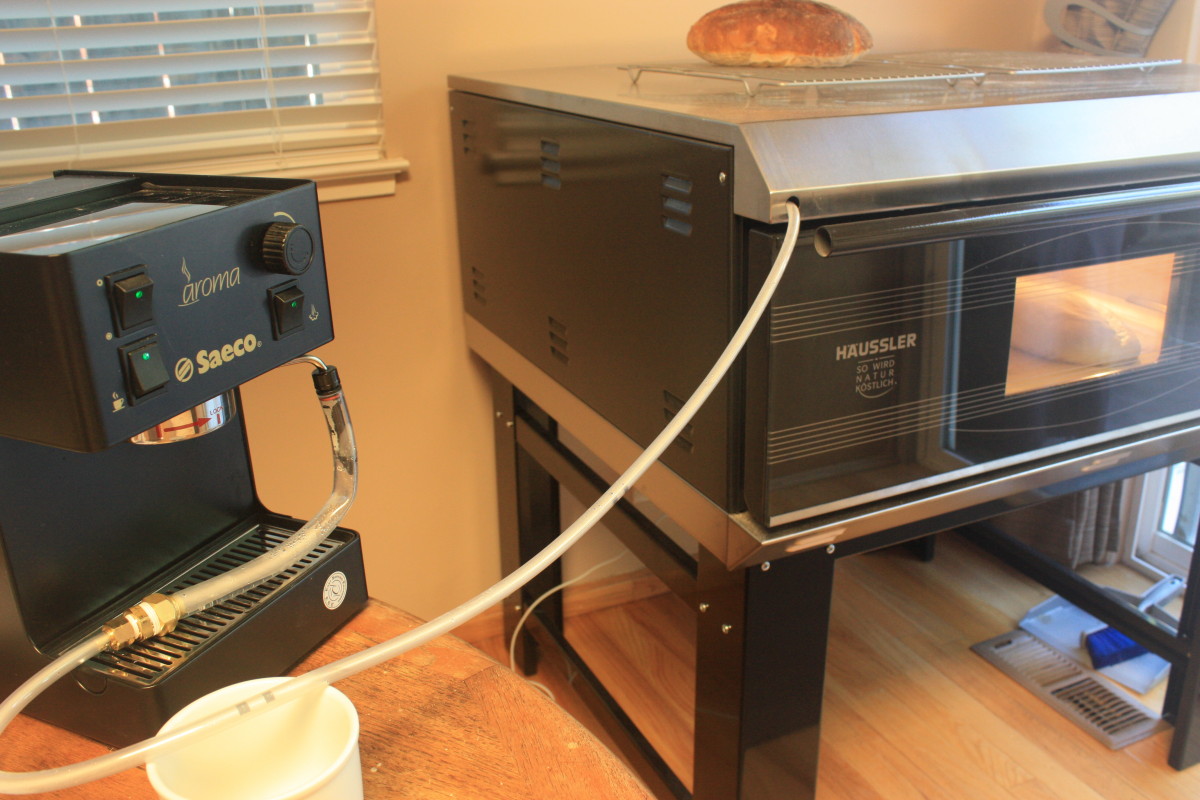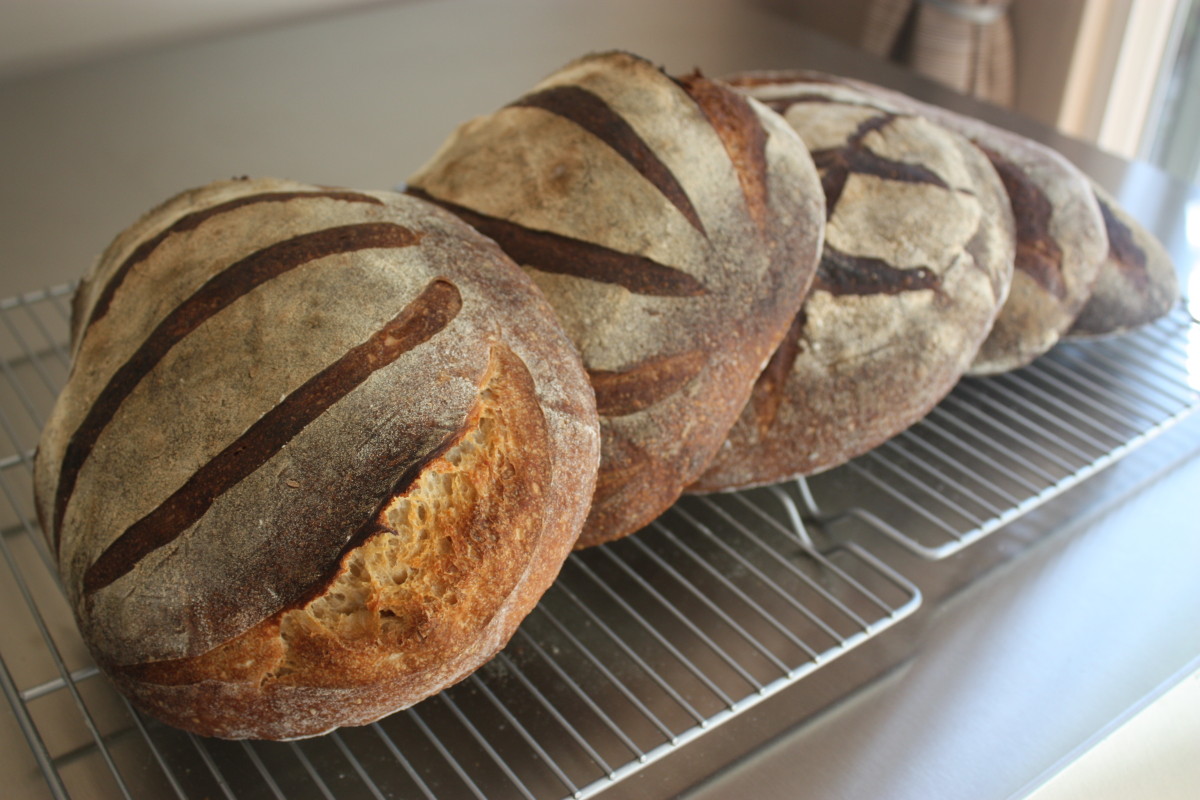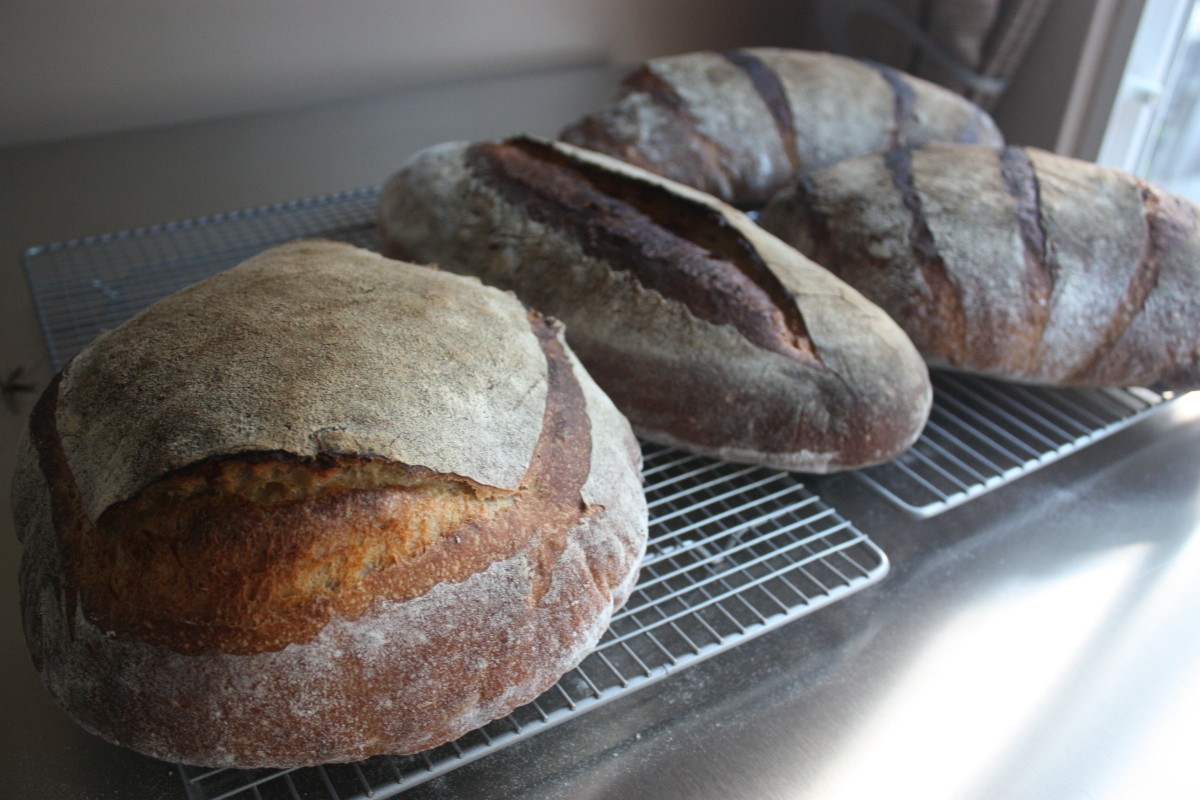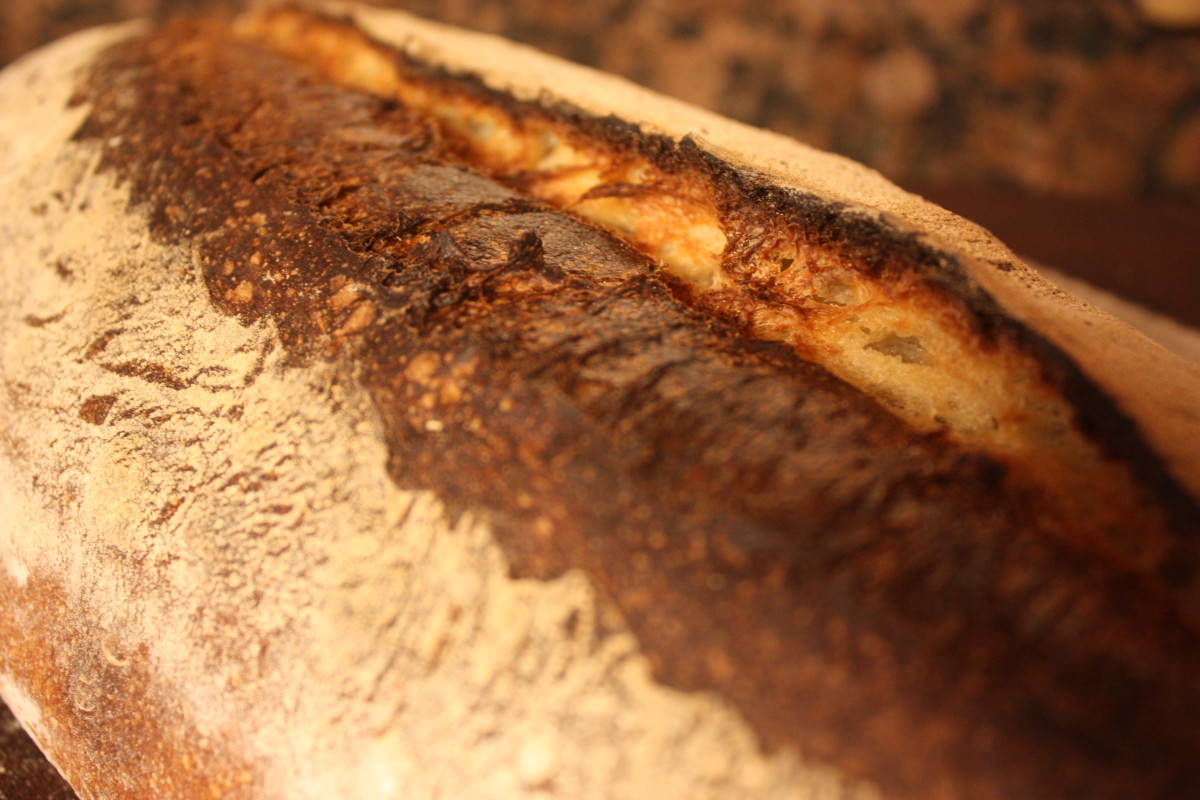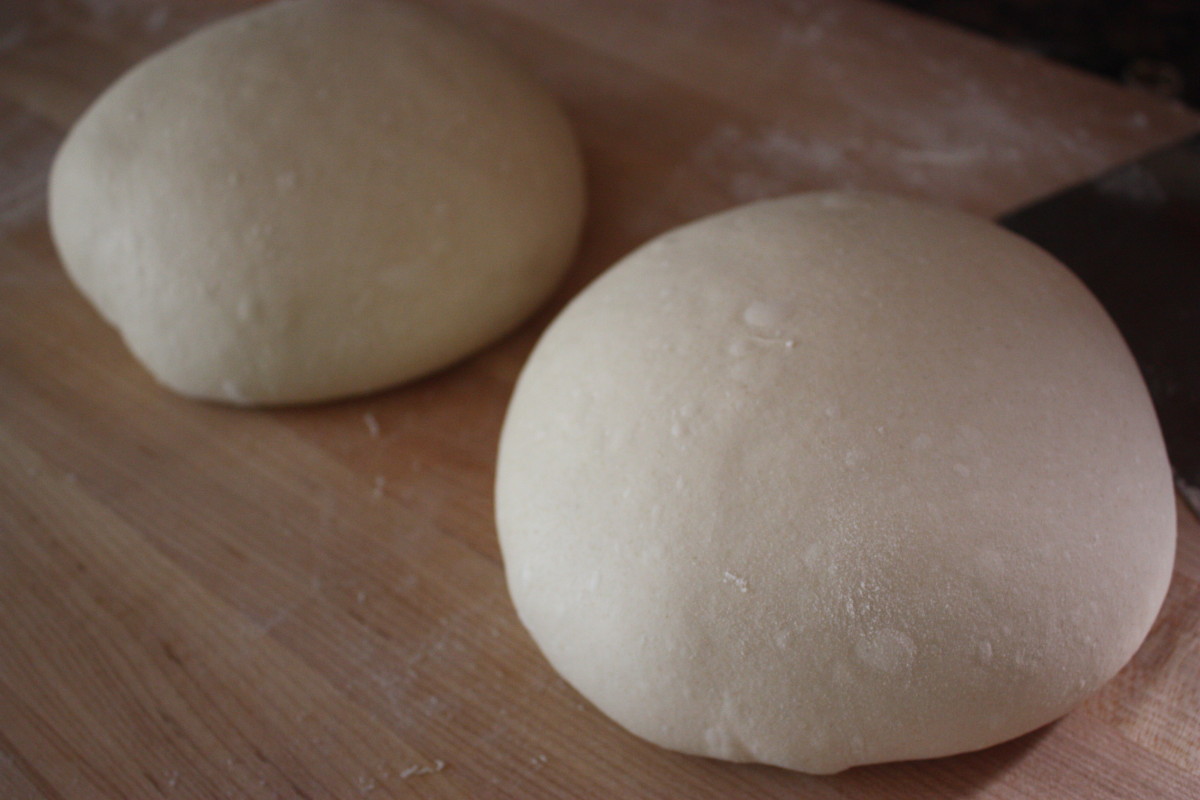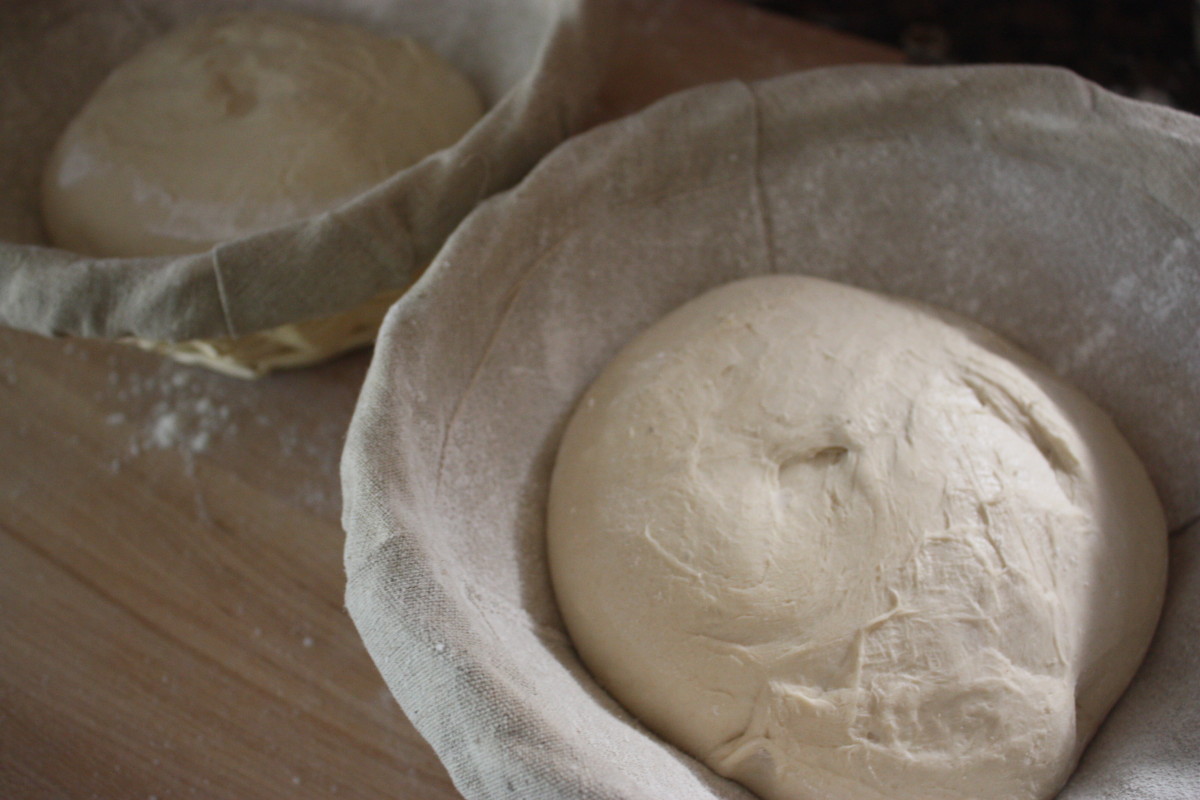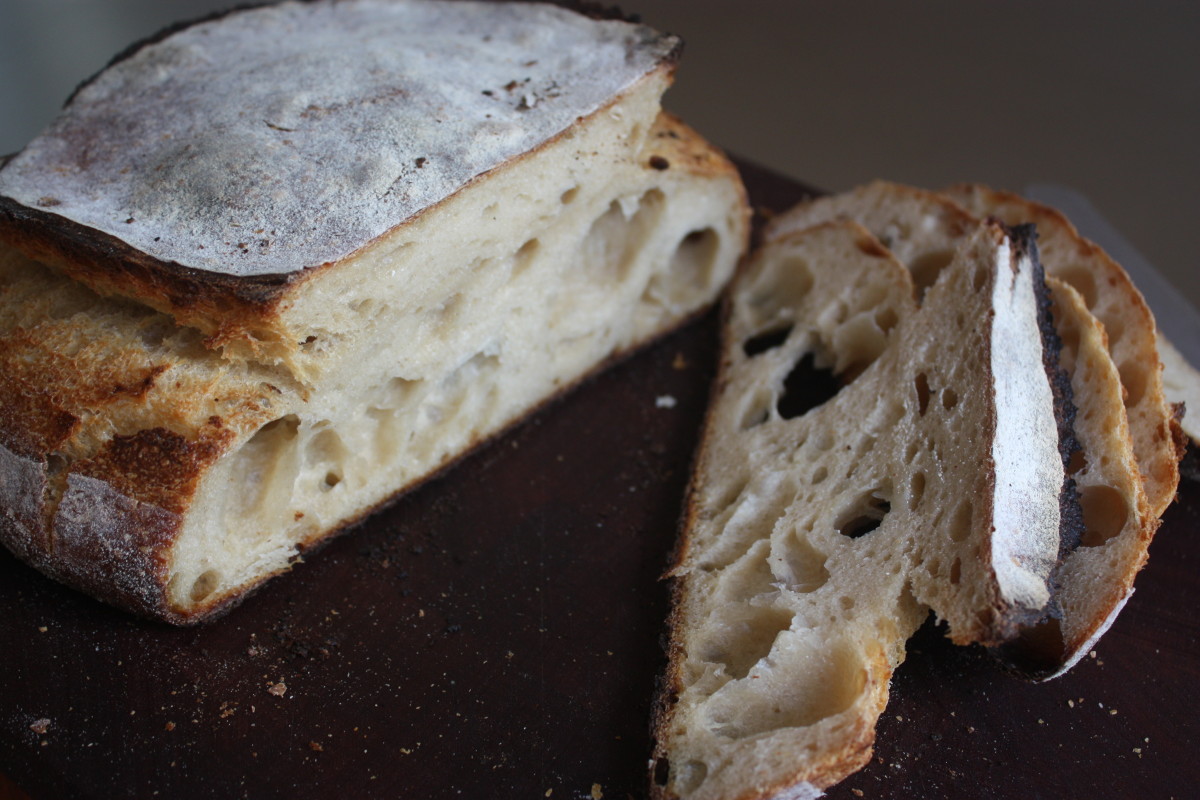Mid-week bread baking was successful as I found a way to work the Tartine recipe into a weekday schedule.
1. Feed starter at night
2. Leaven the next morning
3. Mix and shape the dough in the evening
4. Proof overnight
5. Bake the following morning.
In total time, salve that’s 2.5 days. But since I was able to stack schedules, page I baked two days in the row.
The first day, I baked 650g batards. Of the 6 batards made, only 2 were photo worthy. All 6 had nice rise and had a moist crumb.
The second day, I baked twelve 325g baguettes. While my standard recipe baguette recipe yielded physically larger loafs with better rise, the coloring and ear was more pronounced on the sourdoughs. Still can’t get the proper overlap of scores. This will require more work.

Because I made twelve baguettes, I needed to bake in two batches. For the first batch, the stone oven was a comfortable 475 degrees. By the second batch, the stone oven had dropped to 425 degrees. As you can imagine, two very different breads.

Rise, color, interior texture was less desirable on the lower temperature bread.
At 475 degrees:

At 425 degrees:

While this matters if you’re making baguettes to sell, for co-workers, the blond baguettes are still desirable. Here’s the dozen, packed and ready to go.

